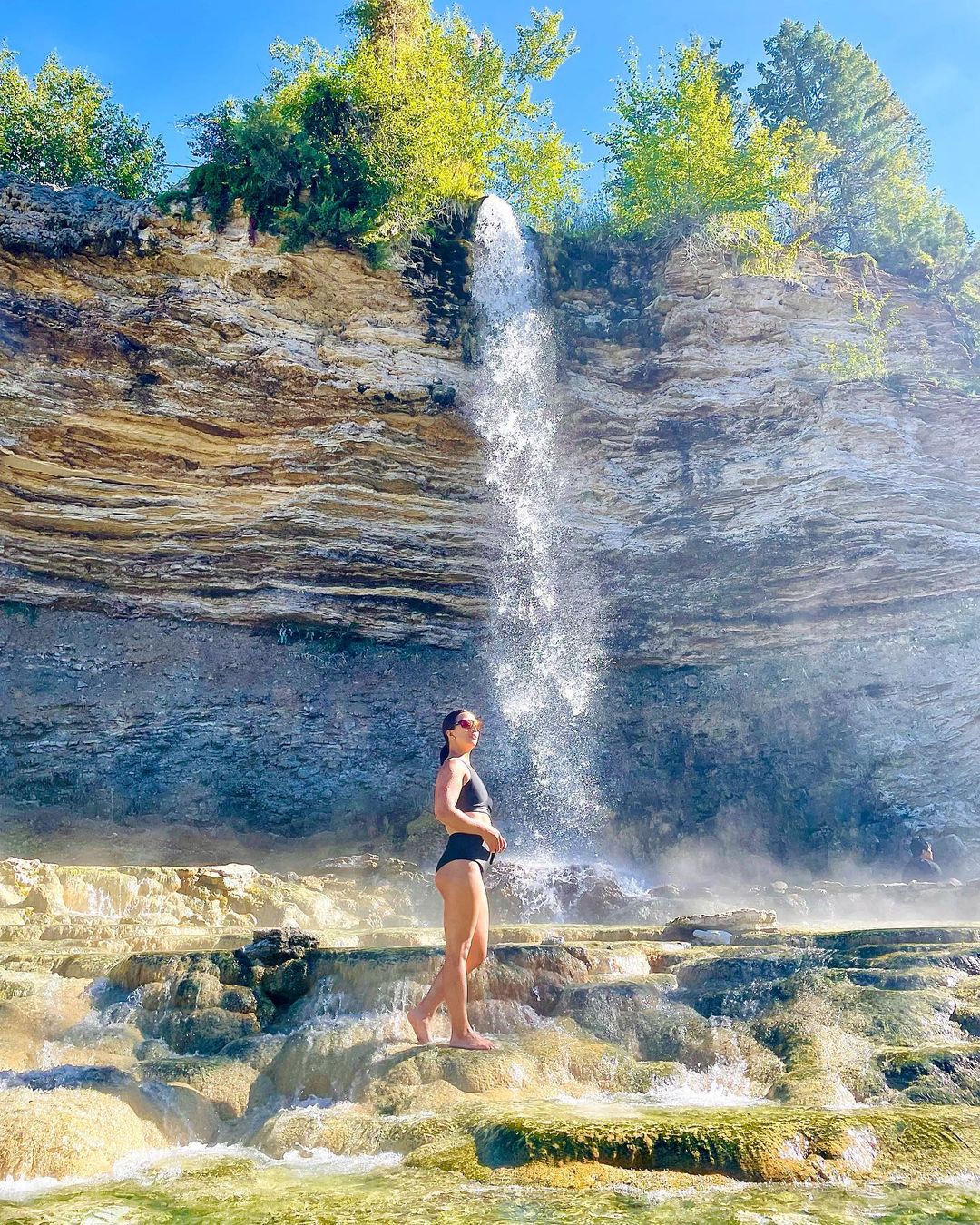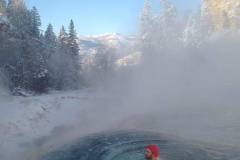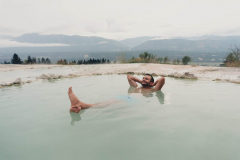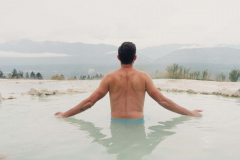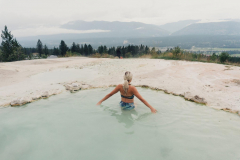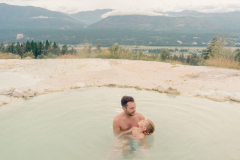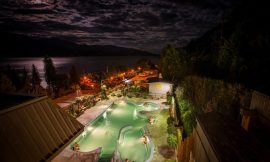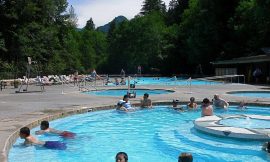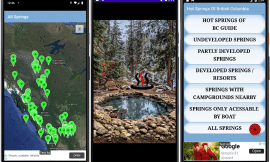Thumbs Up or Down
0 liked this post
0 didn't like this post
50.335929,-115.851088
Water is a source of fun and relaxation for all ages at Fairmont Hot Springs Resort.
The mineral-rich and naturally heated waters have been praised for their restorative properties. There are frequent users of the springs who will testify that the mineral waters have healing powers, also reporting a sense of rejuvenation after each soak.
The water temperature in the hot tub is held at a soothing 39oC (102°F). Our big swimming pool has a temperature of 32°C (89°F) and our dive pool (with low and high diving boards) has a temperature of 30°C (86°F). Calcium bicarbonate, calcium sulfate, magnesium sulfate, sodium chloride, sodium sulfate, silica, potassium chloride, and dissolved radium are all minerals in the water.
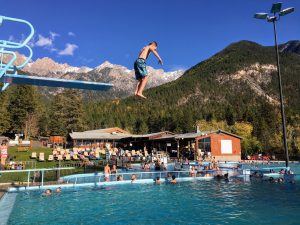
Although chlorine is applied to the pools, the amounts are kept to a minimum, and with over 1.2 million gallons of fresh mineral-rich water flowing through the pools on a regular basis, Fairmont Hot Springs Resort has plenty of Mother Nature’s healing gift to give its guests.
The first written history of Fairmont dates back to the 1800s when the Ktunaxa and Shuswap bands discovered the natural calcium hot springs.
These hot springs were formed over 300 million years ago when the Rockies were worn down and reformed, creating deep cracks in the earth.
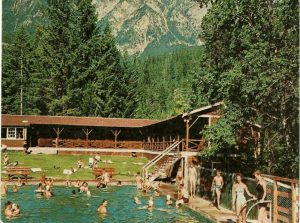
Water collects high in the mountains, enters the rocks through these faults, and runs deep into the mountains, Warmed by the heat of the earth’s core,
it becomes much hotter than when it entered, bubbling back to the surface,
forming the hot springs.
The first homesteader in the area was Englishman George Geary. who arrived in the area in 1887. His homestead was a large tract of land that included the hot springs. The original Geary home is well preserved and visible on the south end of the Mountainside Golf Course.
Sam Brewer, a placer miner from Wisconsin, USA, was working on a gold claim on Perry Creek. His son, Hope Brewer, was born at Perry Creek, B.C. on May 30th, 1886, the first white child in the East Kootenays.
The Brewer family later moved to Joseph’s Prairie, now called Cranbrook, and in 1888 they moved to Fairmont, where Sam purchased the Fairmont Hotel.
property from George Geary.
In 1909, they moved to the Chamberlain Ranch, northeast of Windermere. Sam Brewer’s historic home in Fairmont Hot Springs is still inhabited to this day.
The resort’s Brewer’s Market is named in honor of this early pioneer.
The name Fairmont Hot Springs was given to the area by Mrs. John Galbraith, wife of a ferry operator at Galbraith’s Landing, located near Fort Steele.
In the early 1900s, visionary John Hankey purchased the Fairmont Hot Springs Ranch, re-named it the “Fairmont Hotel Springs”, and offered accommodation for $2 per day, which included the use of the hot springs. With the construction of the bathhouse, the resort became a hub of health, wellness, and hospitality.
In 1912, W. Heap Holland, a cotton manufacturer from Manchester, England, arrived in the area. Intrigued by the hot water, he purchased the property, built a swimming pool, erected a ranch barn, built bungalows, and operated it as a ranch and resort. The original wooden Holland barn is still a well-known landmark in Fairmont Hot Springs.
In 1957, two Saskatchewan brothers, Earl and Lloyd Wilder, and a group of Invermere businessmen, purchased the property. Under the leadership of the Wilder family, the resort began to grow with the addition of the pools, hotel, golf course, airport, and ski hill.
Lloyd’s daughter Carol and her husband Don bought the Riverside Golf Estates in the 1980s and incorporated them into the Fairmont Hot Springs Resort. As time passed and the resort had different owners, major expansion transformed the area into an internationally recognized resort it is today.
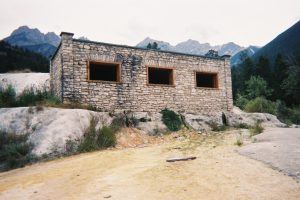
The Fairmont Indian baths, a treasured reminder of the Columbia Valley’s past, are located on a small knoll about a minute’s walk up from the Fairmont Hot Springs parking lot. This old stone bath house sits on a plateau of tufa rock that has been colored orange, brown, green, and blue over time by spring water streams that jump out of the rocks above.
The baths are natural hot spring pools common with the valley’s early settlers. It is unknown why they were dubbed “Indian baths,” and there was no building when explorer David Thompson mentioned them in his book.
Later, a stone building was built on Fairmont Resort grounds, along a road connecting the parking lot to the resort’s trail system
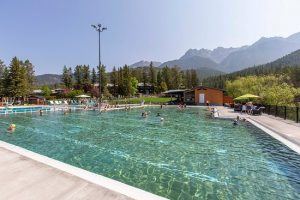
The house is a stone building made up of three small rooms with no doors or glass in the windows. The walls are stuccoed and more than a foot high, and the floor and shallow bathtubs are concrete. Hot, clear, odorless spring water drips into the tubs, maintaining an average temperature of 104 to 108 degrees F.
There are many shallow tubs cut out of tufa rock on a plateau above the bathhouse. Bathers are greeted by breathtaking views of the Columbia River Valley.
This ‘spa service’ at the Fairmont Indian Baths is free of charge. It is Viewable to the public 24 hours a day, seven days a week. It’s a truly unique experience.
please respect the resorts wishes and stay on the outside of the building they are attituding to save them
The Falls:
There’s a Hidden hot waterfall at Fairmont Hot Spring. This beautiful anomaly is hiding in plain sight, directly under the Fairmont Hot Springs Resort.
the hot water cascades from the cliffs above and enters several shallow pools. These springs aren’t particularly deep, but the water is hot enough
to get to these:
there is a path down towards the RV park outside of the commercial springs. A creek runs down the mountainside, separating the resort from the camping area. Just beside the creek, a gravel trail leads you toward the hot pool run-off areas.
[owm-weather id=”3548″/]
SO much extra stuff to do
The resort has a diversity of lodging options, including the Main Lodge, Juniper Lodge, cottages, and cabins, such as the Mountain View Cabins.

“The lodge rooms are built around the hot springs pool and have breathtaking views of the Columbia Valley below, nestled against the Rocky Mountains. Cottage and cabin rooms surround the resort on the south and north sides, offering a more engrossing natural experience. The Lodge RV Park is located across the river to the south. which is a short walk from the resort and allows RV park guests to enjoy the resort’s pools, restaurants, and other amenities,” Sharma explains.
The Lodge and Spruce Grove RV parks have 480 open sites with varying amenity offerings by site type to accommodate a wide range of visitors. Although the Lodge RV Park is on the resort property, the Spruce Grove RV Park is on the banks of the river, only a short walk or drive from the resort.
The resort grounds have three golf courses totaling 45 holes. They have been designed so that golfers of all levels of experience and ability will enjoy a round from spring to fall. The FHSR Golf Learning Center offers private or community coaching from a CPGA pro, as well as access to FHSR’s Trackman system, which provides instant high-quality data on every aspect of one’s swing and impact results.
The ski hill has 12 trails of varying difficulties, terrain and tube parks, and a lift capacity of 1,800 skiers per hour. It helps visitors to escape the crowds and costs of the region’s larger ski hills and is ideal for families with small children and multigenerational families.
Featured photo by: @one_with_nature_clicks
This error message is only visible to WordPress admins
Error: No posts found. No posts made to this hashtag within the last 24 hours. No posts made to this hashtag.
Views:
7,784 views
